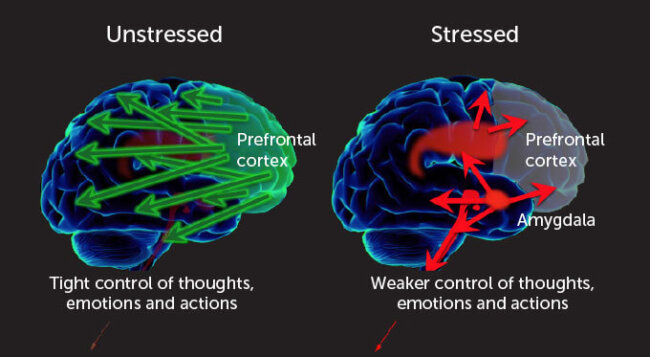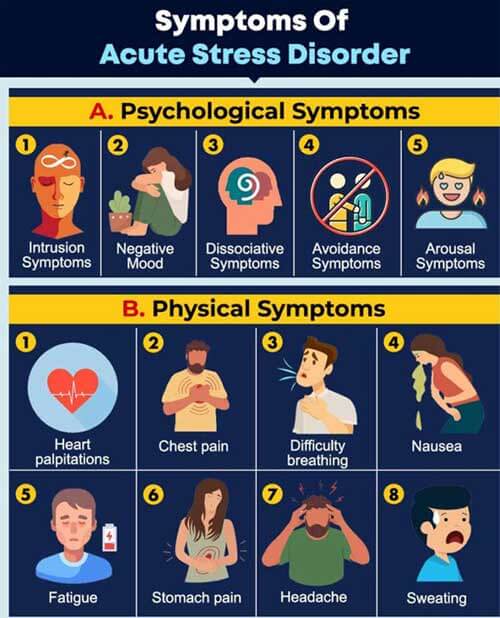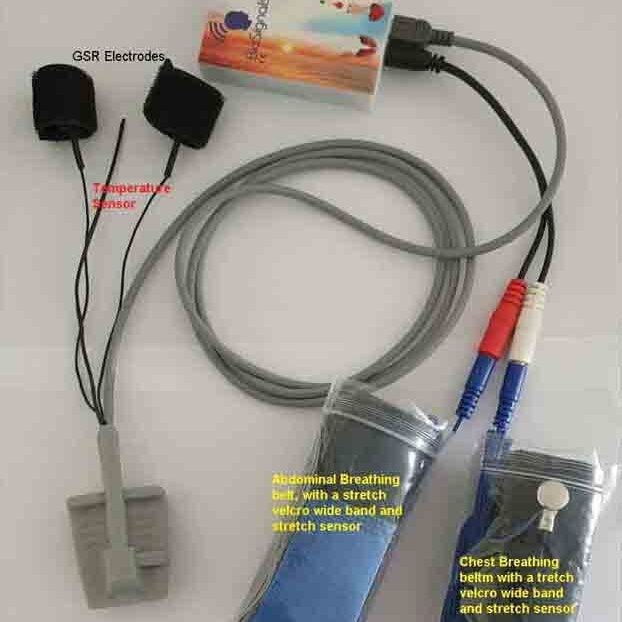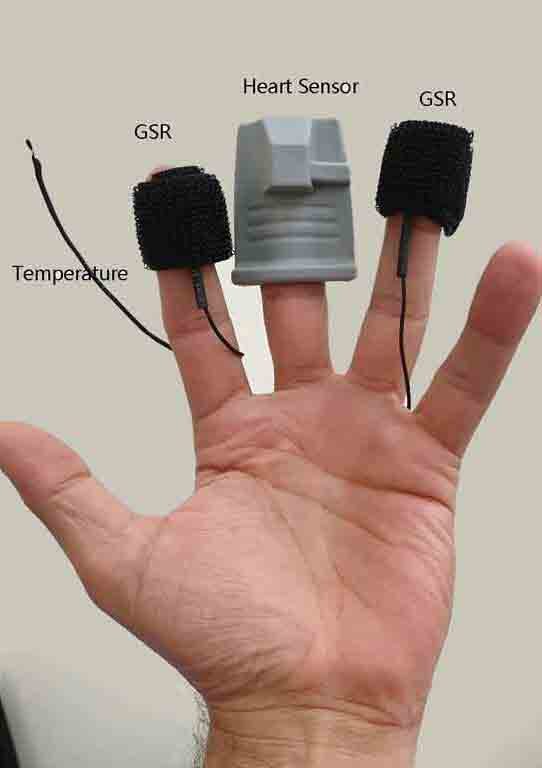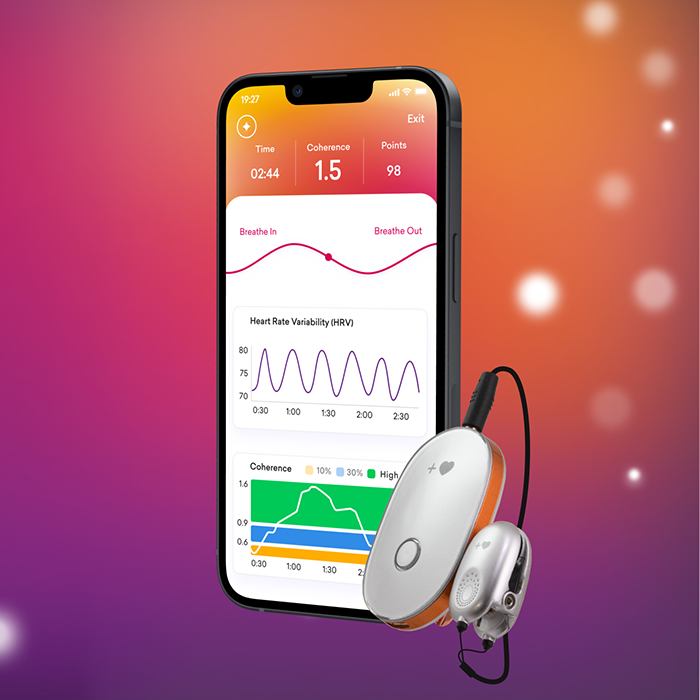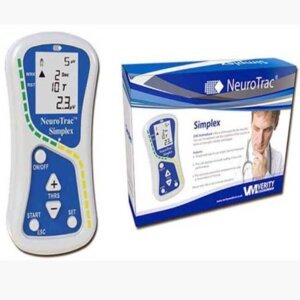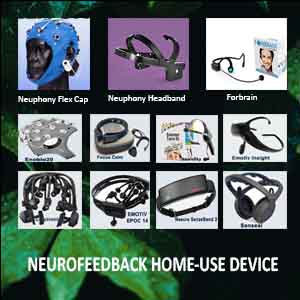
Biofeedback and Stress Management Guide
Stress is a natural survival mechanism that can harm our health and disrupt normal brain function when it becomes severe or prolonged. That’s why managing stress is crucial for preventing the negative changes it can cause in our bodies and for maintaining overall well-being. Today, many devices have been developed to provide biofeedback for stress management, offering solutions that target all biofeedback modalities. These devices make biofeedback for stress reduction more accessible and easier than ever. This allows individuals to manage stress effectively from the comfort of their own homes. Using biofeedback in stress management can prevent stress-related damage and maintain a balanced, healthy life.
Table of Contents
Toggle- Biofeedback and Stress Management Guide
- Definition of Stress
- Modalities of biofeedback in stress management
- Home-use device for biofeedback in stress management
- FAQs: Biofeedback and Stress Management Guide
Definition of Stress
Stress is not what happens to you, but how you react to what happens.
Everyone experiences stress to some degree. How you respond to stress, however, makes a big difference to your overall well-being. Stress is the body’s physical response to a real or perceived threat, demand, or danger. Stress can be defined as any change in the organism that causes physical, emotional, or psychological strain. When you feel threatened, your body releases stress hormones, which prepare the body to respond. This is the “fight or flight” response.
Although stress is a necessary mechanism for survival, severe and long-term stress disrupts standard brain structure and function. Mental stress, ranging from mild levels to severe cases like posttraumatic stress disorder (PTSD), is known to impair memory. This impairment may be due to the elevation of excitatory amino acids and glucocorticoids, which can induce excitotoxicity. Over time, this process may lead to hippocampal atrophy, affecting the brain’s ability to store and retrieve memories.
Factors that cause Stress
Stress factors broadly fall into four types or categories:
- physical stressors,
- psychological stressors,
- psychosocial stressors,
- psycho-spiritual stressors.
Physical stressors
- trauma (injury, infection, surgery),
- intense physical labor/over-exertion,
- environmental pollution (pesticides, herbicides, toxins, heavy metals, inadequate light, radiation, noise, electromagnetic fields),
- illness (viral, bacterial, or fungal agents),
- fatigue,
- inadequate oxygen supply,
- hypoglycemia I(low blood sugar),
- hormonal and biochemical imbalances,
- dietary stress (nutritional deficiencies, food allergies, sensitivities, unhealthy eating habits),
- dehydration,
- substance abuse,
- dental challenges,
- musculoskeletal misalignments/imbalances.
Psychological stressors
- emotional stress (resentments, fears, frustration, sadness, anger, grief/bereavement),
- cognitive stress (information overload, accelerated sense of time, worry, guilt, shame, jealousy, resistance, attachments, self-criticism, self-loathing, unworkable perfectionism, anxiety, panic attacks, not feeling like yourself, not feeling like things are real, and sense of being out of control/not being in control),
- perceptual stress (beliefs, roles, stories, attitudes, world view).
Psychosocial stressors
- relationship/marriage difficulties (partner, siblings, children, family, employer, co-workers, employer),
- lack of social support,
- lack of resources for adequate survival,
- loss of employment/investments/savings,
- loss of loved ones, bankruptcy,
- home foreclosure,
- isolation.
Psycho-spiritual stressors
- a crisis of values, meaning, and purpose;
- joyless striving (instead of productive, satisfying, meaningful, and fulfilling work);
- a misalignment within one’s core spiritual beliefs.
Pathophysiology of stress
Stress response relies on Neural pathways of the cerebral cortex, limbic system, hypothalamus, thalamus, pituitary gland, and reticular activating system (RAS).
- The cerebral cortex deals with vigilance, cognition, and focused attention.
- The limbic system is associated with emotional components like fear, rage, and anger of the stress response.
- The thalamus acts as a relay center and helps receive, sort out, and distribute sensory input.
- The hypothalamus coordinates endocrine and autonomic responses.
The inputs from the prefrontal cortex flow to the dorsomedial amygdala complex, which appears to represent the highest point of origination for the “fight-or-flight.”
The amygdala detects things that are scary or dangerous in the environment.
Different stressors engage different brain networks, requiring fine-tuned functional neuroanatomical processing. This information integration from the stressor itself may result in rapid activation of the Hypothalamus-Pituitary-Adrenal (HPA) axis and the Sympathetic-Adreno-Medullar (SAM) axis, the two major components involved in the stress response.
The Hypothalamus-Pituitary-Adrenal (HPA) axis
It is a neuroendocrine system that mediates a stress response.
Neurons in the paraventricular nucleus of the hypothalamus release vasopressin and corticotropin-releasing hormone (CRH). These hormones travel through the blood vessels to reach their target. CRH binds to receptors on the anterior pituitary gland, specifically the corticotropin-releasing hormone (CRH) receptor. In addition, multiple CRH receptors are found in various brain areas, including the amygdala. CRH is the primary regulatory molecule that releases adrenocorticotropic hormone (ACTH) from the pituitary gland. Once secreted into the bloodstream, ACTH stimulates the adrenal cortex to release glucocorticoid hormones, such as cortisol.
The Sympathetic-Adreno-Medullar (SAM) axis
It may activate the fight-or-flight response through the sympathetic nervous system, which dedicates energy to more relevant bodily systems for acute adaptation to stress.
The inputs from the prefrontal cortex flow to the dorsomedial amygdala complex, which appears to represent the highest point of origination for the “fight-or-flight.” From the dorsomedial amygdala complex, the downward flow of neural impulses passes to the lateral and posterior hypothalamic regions. It continues to descend through the thoracic spinal cord, converging at the celiac ganglion and then innervating the adrenal medulla.
Adrenal glands produce adrenal medullary catecholamine: norepinephrine (noradrenaline) and epinephrine (adrenaline).
The activity of the sympathetic nervous system drives what is called the “fight or flight” response.
Video - Stress Factors & Pathophysiology
The “fight or flight” response to emergency or stress involves
- Increase in arterial blood pressure due to vasoconstriction.
- Increase in blood supply to the brain (moderate).
- Increase in heart rate and cardiac output.
- Increase in the stimulation of skeletal muscles.
- Increase in plasma-free fatty acids, triglycerides, and cholesterol.
- Increase in the release of endogenous opioids.
- Decrease in blood flow to kidneys.
- Decrease in blood flow to the gastrointestinal system (decreased digestive system motility).
- Decrease in blood flow to the skin.
- Increase in risk of hypertension and thrombosis formation.
- Increase in risk of angina pectoris attacks in persons so prone.
- Increase in risk of arrhythmias.
- Increase in risk of sudden death from lethal arrhythmia, myocardial ischemia, myocardial fibrillation, and myocardial infarction.
Types of Stress and Symptoms
There are three different types of stress, and each can damage our bodies. Stress can affect many aspects of your health and well-being, even though you might not realize it.
Acute stress
Acute stress is the most common type and can be helpful in short doses. We experience acute stress multiple times each day. It can occur when a challenge, a perceived threat, or something unexpected happens: giving a speech, arguing with a spouse, getting stuck in traffic, or getting a speeding ticket. The symptoms of acute stress develop quickly and do not last long:
- Pupil dilation (As part of the fight-or-flight reaction, our pupils dilate to allow more light to enter the eyes and enable us to see our surroundings more clearly);
- Fast and heavy breathing (This symptom is also part of the fight-or-flight reaction. It aims to introduce more oxygen into the body’s systems so it can more effectively react to stress);
- Anxiety (this is the feeling of worry and fear that results from exposure to a stressor);
- Poor concentration (this symptom is a consequence of stress hormones and chemicals released into the body by the fight-or-flight response);
- Heart rate increases (this is another part of the fight-or-flight reaction that can be disconcerting if it feels like heart palpitations);
- Raised blood pressure;
- Perspiration (when we are stressed, our body temperature rises, which causes us to sweat more);
- Increased muscle tension;
- Headache,
- Back Pain,
- Jaw Ache,
- Stomach Upset.
Episodic acute stress
This occurs when we frequently experience acute stress and can develop as a result of taking on too much responsibility or being overburdened. Type “A” personalities or people who worry constantly are more prone to experience this type of stress.
The symptoms of episodic acute stress are similar to those of acute stress; however, they occur more often and accumulate.
- Poor concentration is more pronounced than acute stress, and you may also notice increased difficulty with memory and recall.
- Feeling overwhelmed is the feeling of not being able to cope or visualize effective solutions to the causes of your stress.
- Uncontrolled anger and irritability. We find ourselves lashing out more often and with less provocation. We may also find ourselves reacting strongly to things we would generally tolerate.
- Muscle tension. This is meant to help our bodyguard against injury and pain. When exposed to episodic acute stressors, our muscles don’t get the opportunity to relax.
- Tension headaches and migraines are often the result of muscle tension. The frequency and severity of migraines are likely to increase under episodic acute stress.
- Hypertension. A majority of people will be unaware of having high blood pressure. The only reliable way to detect hypertension is to have your blood pressure measured by a health professional.
If not appropriately managed, symptoms can lead to serious health problems such as clinical depression or heart disease.
- Emotional ups and downs (irritability and swings in emotions)
- Poor sleep (our sleep is often disrupted by our anxiety and the cocktail of hormones produced by the fight-or-flight reaction).
Chronic stress
It is constant and persists over an extended period. It is the most harmful type of stress to our overall health.
Chronic stress can be caused by poverty, abuse of any kind, a poor work environment, having a dysfunctional marriage or family, or substance abuse.
The symptoms of chronic stress can become overwhelming or debilitating.
Some people may experience
- Fatigue,
- Changes in appetite – Weight gain. This is often the result of “stress eating,” but it can also result from long-term hormonal imbalances caused by chronic stress.
- Heightened levels of adrenaline and cortisol. Long-term effects of heightened adrenaline and cortisol levels can affect memory and digestion. They can also suppress the immune system.
- Difficulty sleeping is called insomnia. Difficulty falling and staying asleep often results in not feeling rested from whatever sleep you get.
- Tension headaches or migraines are frequent tension headaches occurring more than 15 days a month.
- Panic attacks – Sudden onset of feelings of fear and anxiety accompanied by the symptoms of acute stress.
- Feelings of helplessness.
- Depression: Feeling that you are not able to do anything to help yourself or improve your situation.
- Emotional fatigue manifests as feeling tired most of the time, regardless of the type of rest or sleep you’re getting.
- Difficulty concentrating
- Problems with working memory.
Chronic stress left untreated for an extended period can have severe consequences and lead to health problems such as insomnia, obesity, heart disease, hypertension, or diabetes.
Watch for Chronic stress signs
If you think stress might be affecting you, there are a few things you can watch for:
- Psychological signs such as difficulty concentrating, worrying, anxiety, and trouble remembering
- Emotional signs such as being angry, irritated, moody, or frustrated
- Physical signs such as high blood pressure, changes in weight, frequent colds or infections, and changes in the menstrual cycle and libido
- Behavioral signs such as poor self-care, not having time for the things you enjoy, or relying on drugs and alcohol to cope
Coping
Although stress is inevitable, it can be manageable.
When you understand the toll it takes on you and the steps to combat stress, you can take charge of your health and reduce stress’s impact on your life.
When you start to feel symptoms of emotional exhaustion, it’s a sign that you must find a way to manage your stress.
Try to get regular exercise. Physical activity has a significant impact on your brain and your body. Whether you enjoy Tai Chi or want to begin jogging, exercise reduces stress and improves many symptoms associated with mental illness.
Take care of yourself. Incorporating regular self-care activities into your daily life is essential to stress management. Learn how to take care of your mind, body, and spirit and discover how to equip yourself to live your best life.
Practice mindfulness in your life. Mindfulness isn’t just something you practice for 10 minutes each day. It can also be a way of life. Discover how to live more mindfully throughout your day to become more awake and conscious.
Different modalities of Neurofeedback and Biofeedback for stress management are brain-computer interface technology, which teaches people to control behavioral and autonomic nervous system reactions to stress.
Modalities of biofeedback in stress management
Different modalities of biofeedback for stress management depend on prevailing symptoms.
In case you have more expressed psychological conditions, such as headaches, concentration, memory problems, insomnia, appetite changes, depression, anxiety, or panic attacks, it could be more effective to use Neurofeedback (one of the biofeedback modalities) for the management of stress and its consequences.
Video - Biofeedback for stress management. How to choose Biofeedback Modality
Neurofeedback management of stress and its consequences
Neurofeedback, a scientifically validated global technique, is used to measure and enhance brain activity. It distinguishes between five different brain wave patterns associated with specific mental states, which often overlap. Brain activity, usually unnoticed by our senses, becomes visible through specialized measuring devices. These devices record the brain’s low-level electrical signals from the skull, amplify them, and then display them as graphs, pictures, videos, or even games. The scientific validation of neurofeedback instills confidence in its effectiveness, making it a reliable tool for brain health.
Brainwaves are categorized into different frequency components, each representing distinct states of consciousness. Neurofeedback training aims to improve self-regulation by providing real-time feedback on these brainwave patterns.
Without the feedback, this training effect would not be achievable since brain activity cannot be perceived analytically without devices.
Neurofeedback training aims to optimize brain waves and positively influence perception, thinking, attention, behavior, and well-being.
Anyone can increase their ability to concentrate and memory capacity, sometimes drastically, through neurofeedback training.
Learning and memory skills are also improved. Stress can be reduced effectively and for a long time. The various states of the brain can be influenced by self-regulation. Specific states such as relaxation or sleep can also be trained in this way.
Recommendations on how to choose among different modalities of biofeedback for stress reduction and eliminate its vegetative symptoms
The choice among different modalities of biofeedback for stress management depends on the prevailing symptoms.
In the table below, you can find recommendations on how to choose biofeedback modalities to manage stress and its vegetative symptoms.
- cold hands or feet,
- general stress and tension,
- poor peripheral circulation,
- blood pressure fluctuations,
- increase the depth of meditation
- Raynaud’s syndrome
- migraine or tension headache
- neurosis,
- chronic pain,
- phobias,
- anxiety,
- panic attack,
- depression
- sweaty hands,
- anxiety,
- distracted thoughts,
- agitated mood,
- low anger threshold,
- poor impulse control
- high blood pressure
- tinnitus,
- insomnia (sleep disorders)
- anxiety,
- panic disorders,
- specific phobias
- fast, shallow breathing,
- hyperventilation,
- lightheadedness,
- train abdominal breathing,
- balance breath cycle
- migraine or tension headache
- depression
- attention and concentration problems
- anxiety disorders
- insomnia problems
- asthma and other bronchial tract and lung problems
- hyperventilation
- heart disease and hypertonia
- racing heartbeat (tachycardia),
- arrhythmia
- chest tightness,
- chronic generalized stress,
- difficulties in relaxing,
- rapid shallow breathing,
- low daily energy
- high blood pressure
- anxiety,
- depression,
- heart disease
- insomnia,
- emotional instability,
- deficiency in concentration, attention, and memory
- muscles tension,
- inner tension,
- bad coordination,
- weak muscles,
- back, muscles, or joint pain
- tension headache,
- panic attack/anxiety,
- coordination exercises,
- support psycho-education/self-awareness
In case you have more expressed psychosomatic conditions, such as arrhythmia or tachycardia, high blood pressure, stomach or other digestive problems, obesity or other endocrine changes, etc., it could be more effective the use one of the following modalities of biofeedback for stress management and elimination of its vegetative symptoms:
- Temperature biofeedback (especially effective in case of tension or migraine headache, peripheral capillary circulation problems, Raynaud’s syndrome, etc.),
- Electrodermal Skin Response biofeedback (for therapy of high blood pressure, tinnitus, sleep disorders, and many other conditions caused by an imbalance of the Autonomic Nervous System).
- Breathing biofeedback (in case of hyperventilation, tachypnea, attention and concentration problems, anxiety disorders, insomnia problems, etc.).
- Heart rate variability with respiration (in case of arrhythmia/tachycardia, high blood pressure, insomnia, bronchospasm, etc.),
- EMG biofeedback (more effective in case of locomotors function affection – back, muscles or joint pain, etc.).
Home-use device for biofeedback in stress management
Temperature biofeedback
The skin temperature on your hands is directly influenced by your body’s stress and relaxation responses. Blood flow through the surface tissues changes depending on the activity of the sympathetic nervous system. When you’re under stress, small blood vessels constrict, reducing blood circulation and causing the skin temperature to drop.
In contrast, during calm and relaxed states, blood vessels dilate, increasing skin temperature.
This physiological reaction is the basis of temperature biofeedback training, a powerful technique for enhancing relaxation. A common and effective method is hand-warming training, where you learn to consciously increase blood flow to your hands, raising their temperature and promoting a state of calm.
The BioSignals Biofeedback 5 Sensors Device features a high-precision skin temperature sensor, providing real-time feedback to help users practice and master this technique at home. Whether used independently or in conjunction with other modalities, temperature biofeedback is easy to learn and can significantly enhance stress management, overall well-being, and emotional regulation.
Electrodermal skin response Biofeedback
Galvanic Skin Response (GSR), also known as skin conductance, measures the skin’s electrical properties, which change with activity in the sweat glands—often triggered by stress and emotional arousal.
The BioSignals Biofeedback 5 Sensors Device includes a high-quality GSR sensor that captures subtle physiological changes even before conscious awareness. As stress levels rise, skin conductivity increases due to moisture from activated sweat glands. With biofeedback training, users can learn to lower their skin conductance by consciously entering a relaxed state.
GSR biofeedback is widely used in managing anxiety, phobias, panic disorders, high blood pressure, sleep disturbances, and stress-related symptoms. Its universal application and ease of use make it an essential part of multimodal biofeedback therapy.
With this device, you can observe and reduce your stress responses through electrodermal feedback—all from the comfort of your home.
Breathing Biofeedback
Breathing is unique among biofeedback parameters because it can be consciously controlled. Many people breathe irregularly and shallowly under chronic stress, which disrupts the body’s natural rhythm and perpetuates tension.
Breathing biofeedback teaches you to become aware of your breathing patterns and optimize them for relaxation and balance. It helps you reduce stress, improve oxygenation, and regulate emotional responses. Techniques such as deep, slow, and rhythmic breathing are at the heart of practices like yoga, meditation, and progressive muscle relaxation.
The BioSignals Biofeedback 5 Sensors Device includes a respiration sensor that tracks both breathing amplitude and frequency. Whether you’re a beginner or experienced in self-regulation techniques, this tool allows you to monitor your breathing patterns and retrain your autonomic nervous system for better health and resilience.
You can practice breathing biofeedback individually or combine it with other modalities, such as GSR or temperature, for a more comprehensive training session.
Heart Rate Variability Biofeedback
Heart Rate Variability (HRV) reflects the variation in time intervals between heartbeats and is one of the most scientifically validated indicators of autonomic nervous system balance and stress resilience. High HRV indicates a flexible and adaptive nervous system, while low HRV is associated with chronic stress, fatigue, and various health issues.
HeartMath is one of the most respected and widely used technologies for HRV biofeedback. It guides you to synchronize your breathing and emotions, improve coherence, and increase your HRV. Using visual and auditory cues, HeartMath helps you align your heart rhythms with your breath to promote emotional stability, mental clarity, and physical health.
HeartMath systems utilize the concept of Respiratory Sinus Arrhythmia (RSA)—the natural increase in heart rate during inhalation and decrease during exhalation—to enhance autonomic function. Optimal breathing rates, typically between 4.5 and 6.5 breaths per minute, are used to achieve maximal heart–lung synchronization and HRV amplitude.
By training regularly with HeartMath, you can boost your emotional resilience, reduce stress symptoms, and enhance performance in daily life.
Multimodal Biofeedback with BioSignals Device
The BioSignals Biofeedback 5 Sensors Device allows you to combine multiple biofeedback modalities in a single training session, including HRV (via PPG), GSR, temperature, and respiration. This compact, all-in-one system is ideal for users who want to understand and manage their physiological stress responses holistically.
Whether you prefer focusing on one specific parameter at a time or integrating several in parallel, this device offers flexibility and professional-grade feedback, allowing you to monitor your progress at home.
Discover how to take complete control of your stress response, emotional balance, and physical well-being with this powerful and versatile biofeedback system.
👉 Learn more about the BioSignals Biofeedback 5 Sensors Device
EMG Biofeedback
Our somatic nervous system controls transverse striated muscles subject to voluntary control. Therefore, every muscle’s voluntary action can be observed in an electromyogram. Thus, the muscle tension on which surface EMG electrodes are placed immediately leads to an increased trace in the EMG signal. However, involuntary reactions, such as stress, inner tension, and emotional experience, can also be measured as (tonic) activity in the EMG.
The interplay between the autonomic and somatic nervous systems is particularly well depicted in the EMG. Increased muscle tone is mainly based on increased sympathetic activity, while a decrease can be attributed to more robust parasympathetic activation.
EMG biofeedback training aims to alleviate stress and its associated symptoms by reducing the muscle tone in specific “stress muscles.”
Commonly targeted stress muscles include the frontal muscles (m. frontalis), which are involved in frowning or furrowing the brow; the jaw muscles (m. masseter), which may tighten due to clenching or grinding; and the shoulder muscles (m. trapezius), which often become tense under stress.
Exercises such as progressive muscle relaxation, which involve the targeted contraction and relaxation of these muscles, can help lower their baseline tone. This reduction in muscle tension can lead to a corresponding decrease in overall stress levels, enhancing both physical and mental well-being.
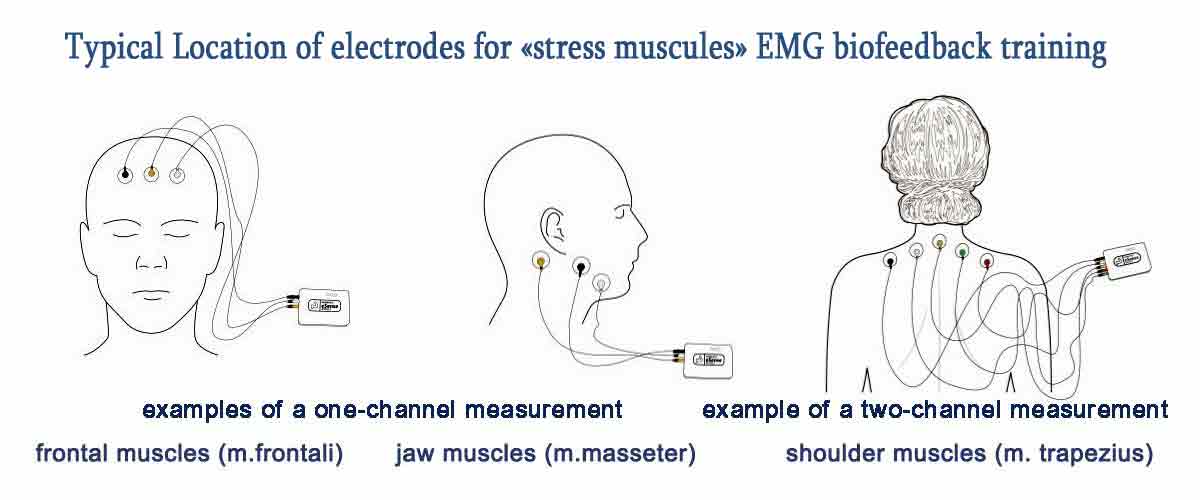
The NeuroTrac Simplex EMG Biofeedback Unit is an affordable, advanced single-channel EMG device designed for efficient biofeedback training. It features a bright LED bar graph and an LCD display, providing clear and easy-to-read feedback during sessions. This modern unit is ideal for individuals seeking a cost-effective solution for monitoring and improving muscle activity.
A combination of different modalities of biofeedback for stress management training is more effective. It gives a high rate of stress vegetative symptoms elimination because it simultaneously rewires different pathways.
FAQs: Biofeedback and Stress Management Guide
Biofeedback for stress management is a technique that uses sensors to monitor physiological functions (like heart rate, muscle tension, and breathing) to help individuals gain control over their stress responses. By providing real-time feedback, it teaches relaxation and self-regulation.
Common types include:
- HRV (Heart Rate Variability) Biofeedback – Improves emotional regulation.
- EMG (Electromyography) Biofeedback – Reduces muscle tension.
- Thermal Biofeedback – Tracks skin temperature to assess relaxation.
- EEG (Neurofeedback) – Helps train brainwave patterns for calmness.
Yes, research shows biofeedback can significantly reduce stress, anxiety, and related conditions by promoting relaxation and improving the mind-body connection.
Many people notice improvements in 5–10 sessions, but results vary based on individual stress levels and consistency in practicing techniques.
Yes. Portable devices (like wearable HRV monitors or smartphone apps) allow home practice. However, professional guidance is recommended for best results.
Yes, biofeedback is safe and effective for children and adolescents, particularly for managing school-related stress, focus issues, and anxiety.

